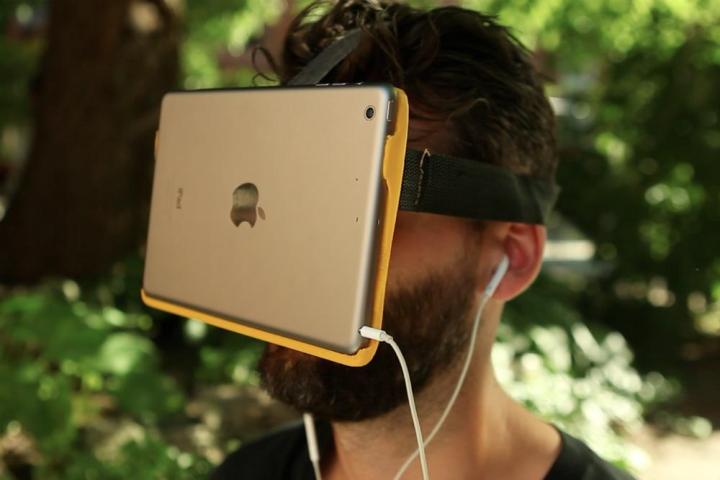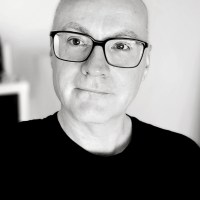
Should the AirVR project be successful, you’ll get a custom designed headset into which you slip your device of choice. That’s right, if you have an iPad Mini, then it’ll be mounted a few inches from your face. That’s a 310 gram, 8-inch plus device strapped to your head, plus the 190 gram weight of the AirVR itself. If your neck doesn’t look like a tree trunk now, it will after using the AirVR for a while. The iPhone 6 Plus is obviously the better choice, being smaller and lighter, and it’s more in-line with how Samsung’s Gear VR operates.
Related: Three unanswered questions which will decide the Gear VR’s fate
However, while the thought of wearing an iPad Mini on our face puts us off the AirVR, a scan of the campaign page reveals some interesting features and quirks. Because the screen won’t be accessible once it’s inside the AirVR, a set of controls have been added to the headset. Called the TouchStrip, the contextually aware buttons are used to operate the AirVR, and an SDK means they can be adapted for use in a variety of apps too. Games can be played using any Made For iPhone Bluetooth controller, or virtual controller apps will launch so you can use your smartphone instead. Three apps will be available straight away, ready for viewing photos, 360-degree panoramas, and 3D movies.
Because the AirVR is a headset, rather than an entire virtual reality machine, the price is very reasonable. It’s $50 for either the iPad Mini or iPhone 6 Plus headset, and at the time of writing there’s still time to get your order in for December delivery. If you miss out, you’ll have to wait until February next year, at which time pre-orders should be live on AirVR’s own website.
Editors' Recommendations
- The best iPads in 2024: the 5 best ones you should buy
- Apple’s new iPad Pro and iPad Air just got delayed
- Best Apple deals: Save on AirPods, Apple Watch, iPad, MacBook
- How to sync your iPhone with your iPad for seamless use
- How to control notification badges on your iPhone and iPad




